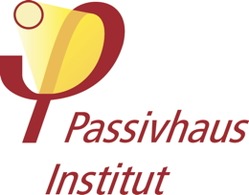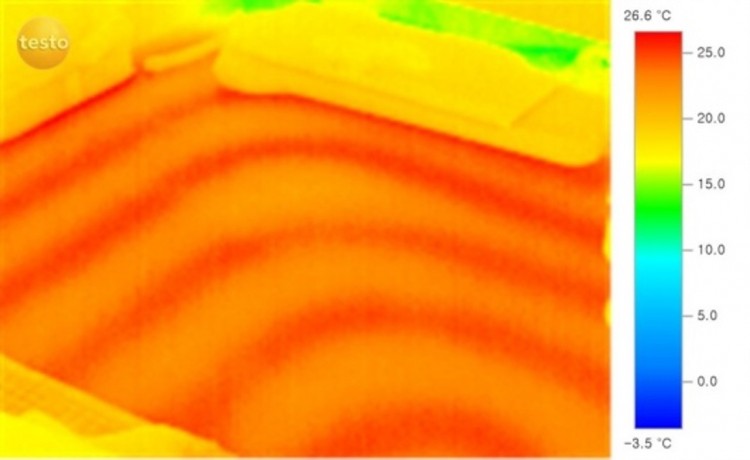 E.0-4. An Explanation of PHIKO's Certification Standard.
E.0-4. An Explanation of PHIKO's Certification Standard.
The Passive House Institute in Germany (passiv.de) recognizes a 1.5L house as a passive house. The rationale for this is founded in the passive house definitions and standards, the heating loads and the basis for the 1.5L.
Our association certifies houses up to 5L. The reason we feel the necessity to state this clearly is because we have heard criticism in the industry that this certification standard is "unfounded." This article can be regarded as a justification of sorts, but it is also an explanation of the direction the association is aspiring to.
1 Germany, the Country

Germany is a progressive nation. Even among developed nations, it is exceptional.
Though it is also a country that gave birth to a monster named Hitler, it is also a country that is honestly and purposefully healing that painful past. And among the European nations it gives the most in foreign aid. No one can deny the astonishing achievements in the basic sector moreover the ability to maintain a steady domestic economy despite difficulties in the European market due to the solid foundation upon which its strength has been built.
However, we should not forget that Germany is also a capitalist state.
There are countless things to be learned, but in the end, capitalism will claim returns. It is important to understand that there is a distinct difference between the country of Germany and German companies. And this is not the case for just Germany.
Capitalism is inherently about profit. We can pay to learn, but after we have learned, we must always think about our industry and our economy. This is the fastest way for us to become a developed nation like Germany.
2. The Passive House Institute of Germany

In Germany, the Passive House Institute, an "independent research institute" founded by Dr. Feist, certifies Passive Houses. The achievements of this person are too vast to list in words. But our respect for him does not warrant that we entrust all our country's skills and revenues in him. It would be the same as paying the American organization USGBC for LEED certification of buildings in Korea. This bias has already been exposed in the article, "LEED with Regret."
We are not saying that anyone is at fault. Everyone is doing his or her work earnestly and in good faith. The important point is that we make a foundation that works for us upon which we can stand, self-reliant to make decisions relevant to our human condition.
Of course, our association also seeks profit. But this is strictly from the domestic market. Also, because we are a non-profit corporation, the profits are always distributed for the benefit of all. Free use of this homepage is one of those benefits.
After receiving certification from the Passive House Institute, through various media networks, "German Certification" appears somewhere, which creates a very complicated structural problem. The correct direct translation should read, certified by the "Passive House Institute in Germany."
Our association certification also just states, "association certification."
3, Is Certification by the Passive House Institute qualitatively the same as PHIKO's Certification?
This matter would seem to be more a matter of conscience than of technology. There is bound to be a loophole in any system, and if there is no conscience in that loophole, certification of any kind has no meaning.
A good building can be certified, but it is not a good building because it is certified.
4. Why is 1.5L not the Certification Standard?
First of all, we considered the problem of just certifying 1.5L houses.
The term Passive House first started to gain momentum in Korea in 2009 and to this day, the number of buildings that meet all of the German Passive House Institute's standards stand at 3 houses. It is not possible to predict the future but for the time being it would seem difficult to add more than 1 per year. With such figures, it is not possible to rouse market interest. It would only be celebrated by the few. It was necessary to broaden the range. Of course if we had made 1.5L our association's standard from the beginning, one or two members would have fulfilled it. But nothing major would have changed.
And second, there is a difference in the level of technology. It is not a difference in theory. It is a difference in passive house building components.
The passive house theory, from the standpoint of experts from various fields, is not new at all, but is a fundamental theory. Theories for insulation, windows, ventilation and so forth when viewed from experts from those respective fields, appears to be quite easy. Perhaps this approach of integrating fundamental theories from various fields is that which gives passive house its significance. But maybe that is why the experts from the respective fields do not find it challenging enough to perk further interest.
The point is that the experts of the respective relevant fields in Korea already fully understand the theory aspect. For example, installation of the brine system for ventilation pre-heating has already been introduced in Korea and is a system, which has been applied to large-scale construction for over 15 years. There is no demand for the brine system in the smaller-scale detached housing market so it has not been applied is all; comprehensive research already exists. The same holds true for the airtightness and ventilation fields as well.
It is only necessary to spearhead integration of the various fields. The research organization created just for this is the "Institute for Passive Zero Energy Building."
Therefore the only discernable difference was in the passive house building components and frankness. When we first founded our association, in order to completely fulfill the 1.5L standard, windows, ventilation systems, shading, insulation, etcetera, all had to be imported from Germany. To this day, not much has changed. If we import the materials from Germany, it is easier to fulfill the standard. (Unfortunately, this "easiness" has no relevance to the architectural design and construction process; but to the certification. Of course, if properly designed and constructed the quality of the architectural work itself will be elevated.) It is just a matter of the Client having to pay more money. This point felt unreasonable. So in order to be able to use local materials and even perhaps improve the functionality of materials (for future markets) by doing so, the aim was to grow the market by broadening the certification range.
Also, being mindful of the conscience and pride of architects and contractors, and restoring market confidence was more important.
Third, we needed to draw the attention of the government.
No matter how much we could improve the quality of living and how much energy we could save, because of the first two points, the government could not be interested because there was no way that the government would invest in buildings that could only be built with German made passive house building components and could only be certified by a privately owned research institute in Germany. Without the interest of the government, policy would take a back seat and any incentives for the architecture field, in particular for detached housing, would drift farther away. There was a need for some reinforcement.
Fourth, in Korea, rather than focusing on 1.5L or 3L certifications, we thought it more important to further policy for solid, well-made buildings. With regard to this topic, there is another Technical Note, so we will omit further discussion here.
Fifth, discussion regarding a 1.5L standard for the purpose of air heating was necessary.
In the process of surveying the energy usage of low-energy houses in Korea, we discovered some interesting facts. During the winter season, most of the homeowners were experiencing severe discomfort in the mornings due to overheating.
In the course of examining possible causes, we found that the room temperature in the mornings was not in the range of human comfort due to the combined heated floor and solar radiation heat loads. To remedy this uncomfortable situation, homeowners were opening their windows to force the temperature down through ventilation; the repeated action of which ironically increased their overall heating loads.
Energy calculations for these low-energy houses were based on the German 1.5L Passivhaus Institute Standard for air heating at 20℃; but with a cultural preference for maintaining heated floors at 30℃, overheating would be unavoidable in Korea. Therefore, the performance of the buildings would have to be set at a target less than 3L; as the heat supplied from the floors would balance losses through the building envelope.
Of course you might wonder why not just forgo the heated floors for an easy solution; however, in contrast to Western cultures where shoes are worn indoors, thousands of years of a culture where eating, sleeping and living on floors can hardly be relinquished.
At the end of the day, 1.5L houses may also be available in Korea. However, without a proper approach, it would be unreasonable to say that only 1.5L homes are valid. It seemed as if we could fall into a never-ending technological dependency. If Germany says it is so, is it so? Without posing this question, our science cannot develop.
5. So Why 5L?
To set a standard at 3L, nearly all-of-the-above-mentioned conflicts remained. And to set the standard at 7L, well, the current building code standard for new construction in Germany is set at 7L. As a fellow developed nation, to set that as a standard for certifying advanced technology buildings would just hurt our pride. And 4L, 6L are even numbers and just did not feel good. So we set the goal at 5L.
But seriously, at the beginning of certification, energy calculations of the building code standard for new construction in Korea was approximately 16L and the insulation standard from September 2013, when run through the PHPP, came to about 13L. At 5L for a newly constructed detached house, performance would be better than twice that of code and could satisfactorily be called low-energy.
6. Is the 10W/㎡ heat load standard being ignored?
No. It is not possible to fulfill the 10W/m2 standard in a 5L house. So it simply could not be the standard for 5L. And it is necessary to determine the minimum heat load with the premise of radiant floor heating. It is just a matter of getting results based on discussions and experiments.
7. More about Radiant Floor Heating
There is a survey we distributed to the low energy homeowners whose homes were built by our association. One of the survey questions was to name one thing that has been uncomfortable and about 30% voiced a complaint about room temperature. Of course, the level of that discomfort is relative.
The gist of the complaint is that when the radiant floor heating is turned on, the temperature of the floor feels just right, but the room air temperature is too hot, and if we set the thermostat at automatic, the boiler hardly kicks on and the room air temperature is good but the floor feels cold. The incidence of this complaint was higher for houses approaching 1.5L.
In other words, there is a gap between heat gain and heat loss. A construction company that is a member of our association, vexed with the issue, tried widening the spacing of the XL pipes more than the typical amount, tried laying XL only in the living room and not in the other rooms, tried laying the XL pipes in just one section of each room, in an effort to find a solution.
However, this will not yield the ultimate solution because although a Client's consent is received during the design phase, when that house is sold and another person lives there, the chances of another being satisfied with such atypical driving conditions will be slim. In other words, it is not a universal method for acceptance by the market.
From our experience, the solution best approximating the answer to this problem is, "on the premise of low temperature heating, rather than widening the spacing of the XL pipes, reduce the diameter of the XL pipes to control the amount of heat, then use floor material with a low conducting surface to increase the sense of warmth." Further extensive testing and discussion is needed on this matter.
But there is a scientific paradox here. If 30℃ is the floor temperature at which Koreans feel comfort, no matter what method is used, the average floor temperature will be the same. In other words, whether low temperature heating is used, XL pipe spacing is widened, or XL pipe diameters are reduced, if the floor temperature is set at 30℃, the warmth felt from the floor is the same no matter what the method; and mathematical calculations then fall into an infinite loop. The question must be discussed in tandem with flooring material to determine the temperature point of warmth (felt from the floor) rather than the temperature in general. In other words, if the temperature is lowered 2-3 degrees but the floor feels like 30℃, then that is the goal.
If this condition can be met, then the passive house certification standard in Korea will be complete.
8. Then is the 1.5-liter standard of other similar organizations in Korea unreasonable?
This is a sore question and there are pros and cons to everything. If our association did not exist, the term "passive house" would not have spread so far throughout the country to this date.
Conversely, if those organizations did not exist, we would not have been able to see a 1.5L house in Korea. Therefore, there is significance in the existence of us all.
And from the standpoint of the consumer, it is not even important. They just want a decent house at a reasonable price.
To put it another way, even if the various organizations are internally engaged in fierce debates, if on the surface, the goals reflected to the general public are the same, that is what is significant. In other words, if the goals "quality of life and low energy" are reflected on the outside, then that is enough.
However, in order to eschew the fierce debate amongst the organizations, our association also refers to 1.5L as a passive house and 1.5 ~ 5L as a low energy one. This may seem to be an obvious strategy, however, it was a conclusion made after long deliberation.
9. Any final words for those who have read this article?
"Praise can make whales dance." If there are any scientific errors, please do not hesitate to submit your sharp objective corrections with the understanding that we are an organization that survives on your participation and support. We will do our utmost not to disappoint you.
------------------------------------------------------
Translated by Alice J Choy (ajcblue@gmail.com)

 E.0-4. An Explanation of PHIKO's Certification Standard.
E.0-4. An Explanation of PHIKO's Certification Standard.
